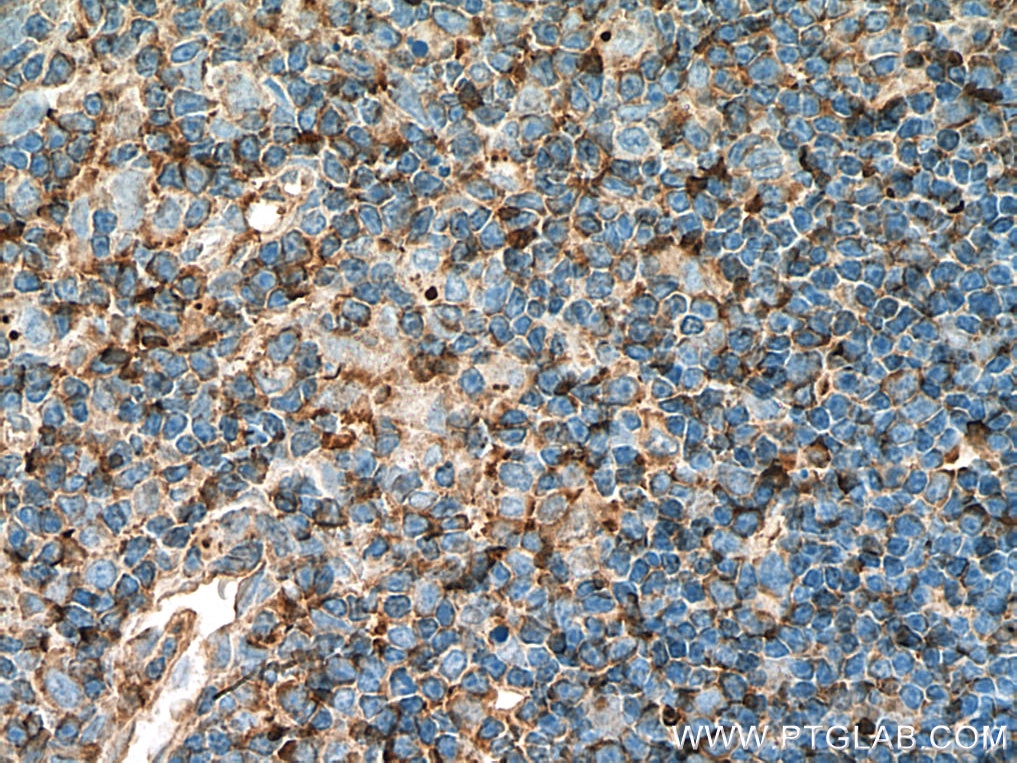AAGAB Polyclonal antibody
AAGAB Polyclonal Antibody for WB, IHC, ELISA
Host / Isotype
Rabbit / IgG
Reactivity
human, mouse, rat
Applications
WB, IHC, ELISA
Conjugate
Unconjugated
Cat no : 27319-1-AP
Synonyms
Validation Data Gallery
Tested Applications
| Positive WB detected in | K-562 cells, mouse thymus tissue |
| Positive IHC detected in | mouse thymus tissue, rat thymus tissue Note: suggested antigen retrieval with TE buffer pH 9.0; (*) Alternatively, antigen retrieval may be performed with citrate buffer pH 6.0 |
Recommended dilution
| Application | Dilution |
|---|---|
| Western Blot (WB) | WB : 1:500-1:2000 |
| Immunohistochemistry (IHC) | IHC : 1:200-1:800 |
| It is recommended that this reagent should be titrated in each testing system to obtain optimal results. | |
| Sample-dependent, Check data in validation data gallery. | |
Product Information
The immunogen of 27319-1-AP is AAGAB Fusion Protein expressed in E. coli.
| Tested Reactivity | human, mouse, rat |
| Host / Isotype | Rabbit / IgG |
| Class | Polyclonal |
| Type | Antibody |
| Immunogen | AAGAB fusion protein Ag26340 相同性解析による交差性が予測される生物種 |
| Full Name | alpha- and gamma-adaptin-binding protein p34 |
| Observed molecular weight | 38 kDa |
| GenBank accession number | BC058886 |
| Gene symbol | AAGAB |
| Gene ID (NCBI) | 79719 |
| RRID | AB_2880841 |
| Conjugate | Unconjugated |
| Form | Liquid |
| Purification Method | Antigen affinity purification |
| Storage Buffer | PBS with 0.02% sodium azide and 50% glycerol pH 7.3. |
| Storage Conditions | Store at -20°C. Stable for one year after shipment. Aliquoting is unnecessary for -20oC storage. |
Background Information
Recent study indicate that mutations in AAGAB can cause punctate palmoplantar keratoderma type I (PPKP1; OMIM#148600), also called keratosis punctata palmoplantaris Buschke-Fischer-Brauer. The predicted MW of this protein is 35 kDa. Catalog#27319-1-AP recognises 37-40 kDa band may due to phosphorylation.
Protocols
| Product Specific Protocols | |
|---|---|
| WB protocol for AAGAB antibody 27319-1-AP | Download protocol |
| IHC protocol for AAGAB antibody 27319-1-AP | Download protocol |
| Standard Protocols | |
|---|---|
| Click here to view our Standard Protocols |







